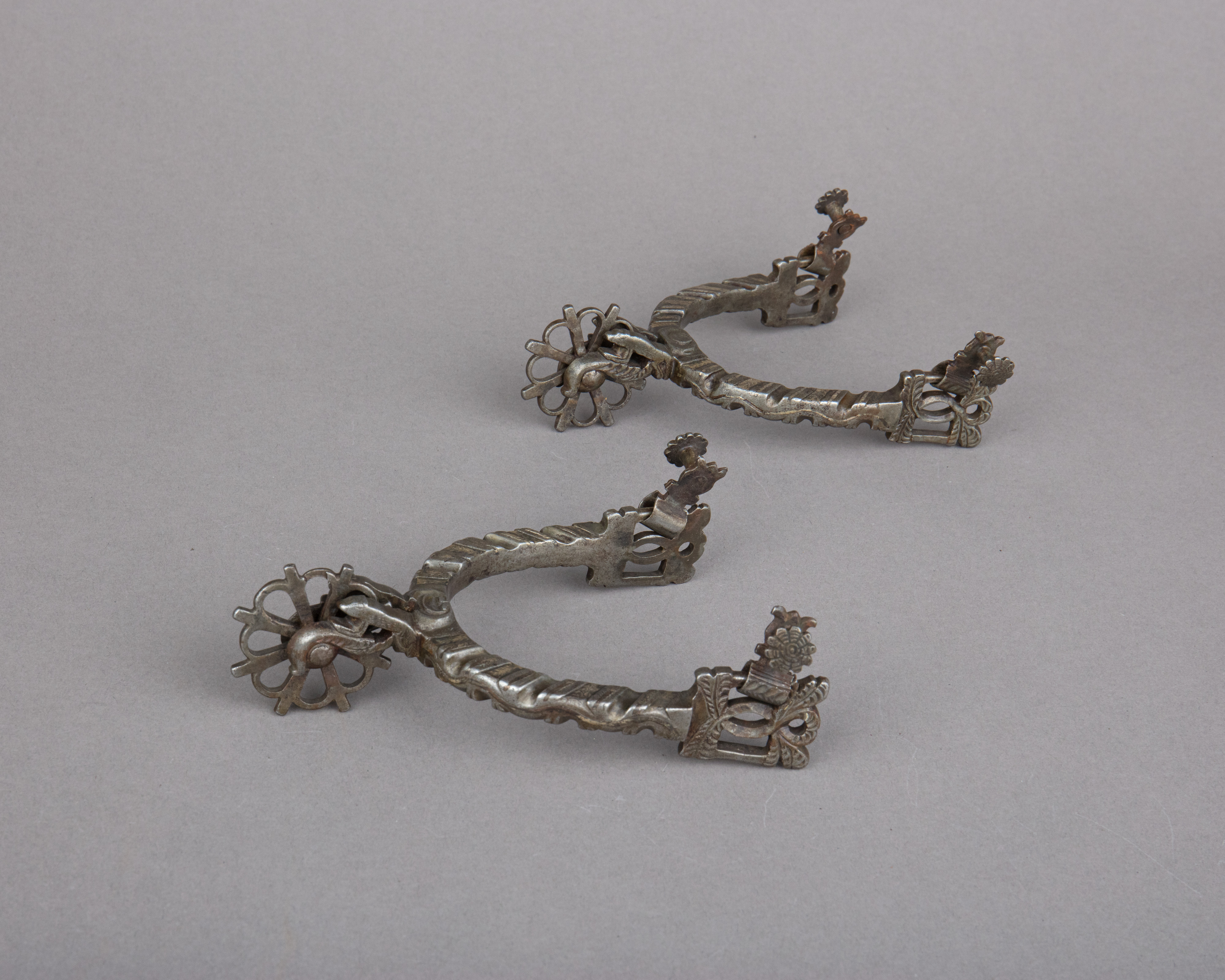Pair of Rowel Spurs
Not on view
This pair of spurs was made for a Mexican charro (a Mexican cowboy) probably in the second half of the 18th century. The necks of these spurs are decorated with what looks like a canid on a leaf, possibly a gray fox, the only American canid that can climb trees. They hold pierced rowels shaped as flowers. The heel bands are chiseled on the sides as waving branches inlaid with silver. An engraved and pierced foliate design adorns the terminals, of which the bottom slots attached a heel chain, an element disappearing from later examples, only featuring attachements for an upper strap. If the animal in relief is still a typical 18th century decoration, the general shape of these spurs is already close to the types developed in the 19th century.
Charros were originally land, horse, and cattle owners who had a high social and economic status. They would meet during ceremonies and festivals and demonstrate their skills through several varieties of rodeo games called charrería. Charros and charrería remain important parts of Mexican traditional culture. During these festive events, charros could display splendidly decorated horse tack and spurs, the latter being one of the primary symbols of their culture.
Due to rights restrictions, this image cannot be enlarged, viewed at full screen, or downloaded.
This artwork is meant to be viewed from right to left. Scroll left to view more.



